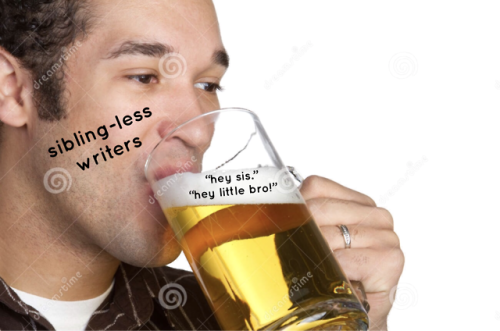The Five Stages Of Decomposition

The Five Stages of Decomposition
Found a little summary of human decomposition primarily used for writing, but an interesting read for everyone else.
Following death, the human body progresses through five basic stages of decomposition. The duration and degree of each stage is largely influenced by the environment (temperature, humidity, etc.), body mass, any wrappings or coverings of the body, and obviously scavenging or other post-mortem disturbances. Additionally, submerged or buried bodies will decompose much differently than bodies left on the ground. This is what I will be referring to below. Here are the general descriptions of the five stages of decomposition:
Fresh
The fresh stage begins immediately after death when the circulatory system (heart beating/pumping blood) stops functioning. It is during this stage that the blood will settle with gravity creating a condition known as lividity. After several hours the muscles will also begin to stiffen in a process known as rigor mortis. The body temperature will also begin to acclimate to the environment. Cells will begin to break down and release enzymes during a process called autolysis which can cause blisters on the skin. The anaerobic organisms in the digestive tract will begin to multiply, producing acids and gases (the source of the bad odors). This process is often referred to as putrefaction.
Bloat
As the name implies, the gases being produced during putrefaction begin to build and will give the body a distended appearance. Gases and fluid will eventually escape through the natural orifices as the pressure builds. As the gastrointestinal bacteria multiply and can lead to conditions like marbling which is a discoloration pattern seen in the skin. You may also see green discoloration in the abdomen areas and eventually a darkening (blackish) coloring of the skin overall as the process advances. Interestingly enough; I remember one time I was giving a lecture on forensic entomology at a college campus and after the lecture a serious looking young black student approached me. She asked me why I only showed pictures of black victims in my presentation. I was a bit taken back and briefly confused as I ran through a mental recap of the cases I presented. I finally told her that all of the victims were in fact white (Caucasian) in life but due to this process their skin darkened. It was an eye-opening experience and I made sure to describe this process more effectively when lecturing the public.
Active Decay
During his phase the body begins to lose much of it’s fluids and mass (tissue) through purge and insect and/or vertebrate scavenging (coyote, fox, lion, etc). During this phase you may see very large maggot masses and notice a considerable increase in foul odors.
Advanced Decay
This phase is the end of the active decay process. Temperatures can either speed up (heat) or slow down (cold) how quickly a body reaches this phase. The body has very little body mass and soil staining of the surrounding soils is still evident. This soil staining (from body fluids) may actually kill some of the surrounding vegetation temporarily. Maggots will migrate away from the body to pupate and flies will cease laying eggs.
Dry/Skeletal
This phase is the last measurable stage of decomposition. The timing of this stage varies widely by environment. For example, a body in Florida in July (hot/humid) may reach this stage in a week while in the Winter in the Rocky Mountains (cold/arid) it might take months. If there is any skin left it will be leather-like and very tough. Mostly the body is reduced to bones and connective tissue. There is no biomass available for diverse insect colonization. Some beetles and adventitious insects may colonize a body for shelter or feeding on other insects and connective tissue. Over time the bones may “bleach” (turn white) with exposure to sunlight and eventually will begin to exhibit cracks after several years. These weathering cracks are distinctive and would not be confused with a fresh break (injury) unless by an inexperienced analyst.
More Posts from Royalrhythm and Others
13?????????????
13. What is the best writing advice?
I think there are two extremely important pieces of advice for writing: one I learned from my creative writing professor at college, and the other I learned from Stephen King in his novel On Writing.
> From my creative writing professor: Keep a journal and don’t think about what you’re putting in it. Just create. Doodle, scribble, quote, write things down people sitting beside you say, etc. Do this for a few weeks and then look through it again. I guarantee you’ll find something interesting in there for inspiration. Or it will just encourage writing/creating every day.
> From Stephen King: You’ll never been a good writer if you don’t read. Read a lot. Read novels, short stories, whatever; but make sure you’re reading while you’re writing or you’re going to fail.
Both of these are very obviously paraphrased! But that’s the gist of them. I think they’re super, super important.
send me writer asks!
What you can say instead of the word beautiful:
lovely,
charming,
delightful,
appealing,
engaging,
winsome
ravishing,
gorgeous,
heavenly,
stunning,
arresting,
glamorous,
irresistible,
bewitching,
beguiling
graceful,
elegant,
exquisite,
aesthetic,
artistic,
decorative,
magnificent
a massively extended version of ruthlesscalculus’ post
General Tips
Joss Whedon’s Top 10 Writing Tips
Getting Out of Your Comfort Zone
34 Writing Tips that will make you a Better Writer
50 Free resources that will improve your writing skills
5 ways to get out of the comfort zone and become a stronger writer
10 ways to avoid Writing Insecurity
The Writer’s Guide to Overcoming Insecurity
The Difference Between Good Writers and Bad Writers
You’re Not Hemingway - Developing Your Own Style
7 Ways to use Brain Science to Hook Readers and Reel them In
8 Short Story Tips from Kurt Vonnegut
How to Show, Not Tell
5 Essential Story Ingredients
How to Write Fiction that grabs your readers from page one
Why research is important in writing
Make Your Reader Root for Your Main Character
Writing Ergonomics (Staying Comfortable Whilst Writing)
The Importance of Body Language
Character Development
10 days of Character Building
Name Generators
Name Playground
Universal Mary Sue Litmus Test
Seven Common Character Types
Handling a Cast of Thousands Part 1 - Getting To Know Your Characters
Web Resources for Developing Characters
Building Fictional Characters
Fiction Writer’s Character Chart
Character Building Workshop
Tips for Characterization
Character Chart for Fiction Writers
Villains are people too but…
How to Write a Character Bible
Character Development Exercises
All Your Characters Talk the Same - And They’re Not A Hivemind!
Medieval Names Archive
Sympathy Without Saintliness
Family Echo (Family Tree Maker)
Behind The Name
100 Character Development Questions for Writers
Aether’s Character Development Worksheet
The 12 Common Archetypes
Six Types of Courageous Characters
Kazza’s List of Character Secrets - Part 1, Part 2
Creating Believable Characters With Personality
Body Language Cheat Sheet
Creating Fictional Characters Series
Three Ways to Avoid Lazy Character Description
7 Rules for Picking Names for Fictional Characters
Character Development Questionnaire
How to Create Fictional Characters
Character Name Resources
Character Development Template
Character Development Through Hobbies
Character Flaws List
10 Questions for Creating Believable Characters
Ari’s Archetype Series
How to Craft Compelling Characters
List of 200 Character Traits
Writing Characters of the Opposite Sex
Making Your Characters Likable
Do you really know your characters?
Character Development: Virtues
Character Development: Vices
Character Morality Alignment
List of Negative Personality Traits
List of Positive Personality Traits
List of Emotions - Positive
List of Emotions - Negative
Loon’s Character Development Series - Part 1, Part 2, Part 3, Part 4
Phobia List A-L (Part 1), M-Z (Part 2)
30 Day In Depth Character Development Meme
Words for Emotions based on Severity
Eight Bad Characters
High Level Description of the Sixteen Personality Types
Female Characters
How Not to Write Female Characters
Writing Female Characters
How to write empowering female characters
Why I write strong female characters
Red Flags for Female Characters Written by Men
Writing strong female characters
The Female Character Flowchart
Eight Heroine Archetypes
Male Characters
Eight Hero Archetypes
Tips for Specific Characters
Writing A Vampire
Writing Pansexual Characters
Writing Characters on the Police Force
Writing Drunk Characters
Writing A Manipulative Character
Writing A Friends With Benefits Relationship
Writing A Natural Born Leader
Writing A Flirtatious Character
Writing A Nice Character
Fiction Writing Exercises for Creating Villains
Five Traits to Contribute to an Epic Villain
Writing Villains that Rock
Writing British Characters
How To Write A Character With A Baby
On Assassin Characters
Dialogue
It’s Not What They Say…
Top 8 Tips for Writing Dialogue
Speaking of Dialogue
The Great Said Debate
He Said, She Said, Who Said What?
How to Write Dialogue Unique to Your Characters
Writing Dialogue: Go for Realistic, Not Real-Life
Point of View
Establishing The Right Point of View
How to Start Writing in the Third Person
The I Problem
Plot, Conflict, Structure and Outline
Writing A Novel Using the Snowflake Method
Effectively Outlining Your Novel
Conflict and Character Within Story Structure
Outlining Your Plot
Ideas, Plots and Using the Premise Sheets
How To Write A Novel
Creating Conflict and Sustaining Suspense
Plunge Right In…Into Your Story, That Is
Tips for Creating a Compelling Plot
36 (plus one) Dramatic Situations
The Evil Overlord Devises A Plot: Excerpt from Stupid Plot Tricks
Conflict Test
What is Conflict?
Monomyth
The Hero’s Journey: Summary of Steps
Outline Your Novel in Thirty Minutes
Plotting Without Fears
Novel Outlining 101
Writing The Perfect Scene
One-Page Plotting
The Great Swampy Middle
How Can You Know What Belongs In Your Book?
Create A Plot Outline in 8 Easy Steps
How to Organize and Develop Ideas for Your Novel
Create Structure in your novel using index cards
Choosing the best outline method for you
Hatch’s Plot Bank
Setting & Worldbuilding
Magical Word Builder’s Guide
I Love The End Of The World
World Building 101
The Art of Description: Eight Tips to Help Bring Your Settings to Life
Creating the Perfect Setting - Part 1
Creating a Believable World
Setting
Character and Setting Interactions
Maps Workshop - Developing the Fictional World Through Mapping
World Builders Project
How To Create Fantasy Worlds
Creating Fantasy and Science Fiction Worlds
Creativity Boosters* denotes prompts
*Creative Writing Prompts
*Ink Provoking
*Story Starter
*Story Spinner
*Story Kitchen
*Language is a Virus
*The Dabbling Mum
Quick Story Idea Generator
Solve Your Problems By Simply Saying Them Out Loud
Busting Your Writing Rut
Creative Acceleration: 11 Tips To Engineer A Productive Flow
Writing Inspiration, Or Sex on a Bicycle
The Seven Major Beginner Mistakes
Complete Your First Book with these 9 Simple Writing Habits
Free Association, Active Imagination, Twilight Imaging
Random Book Title Generator
Finishing Your Novel
Story Starters & Idea Generators
Words to Use More Often
Revision & Grammar
How To Rewrite
Editing Recipe
Cliche Finder
Revising Your Novel: Read What You’ve Written
Writing 101: Revising A Novel
20 Common Grammar Mistakes That (Almost) Everyone Makes
Synonyms for the Most Commonly Used Words of the English Language
Grammar Urban Legends
Tools & Software
Tip Of My Tongue - Find the word you’re looking for
Write or Die - Stay motivated
Stay Focused - Tool for Chrome, lock yourself out of distracting websites
My Writing Nook - Online Text Editor, Free
Bubbl.us - Online Mind Map Application, Free
Family Echo - Online Family Tree Maker, Free
Freemind - Mind Map Application; Free; Windows, Mac, Linux, Portable
Xmind - Mind Map Application; Free; Windows, Mac, Linux, Portable
Liquid Story Binder - Novel Organization and Writing Application; free trial, $45.95; Windows, Portable
Scrivener - Novel Organization and Writing Application; free trial, $39.95; Mac
SuperNotecard - Novel Organization and Writing Application; free trial, $29; Windows, Mac, Linux, portable
yWriter - Novel Organization and Writing Application; free; Windows, Linux, portable
JDarkRoom - Minimalist Text Editing Application; free; Windows, Mac, Linux, portable
AutoRealm - Map Creation Application; free; Windows, Linux with Wine
Specific Help
Fashion Terminology
All About Kissing
Genre Help: Romance
187 Mental Illnesses
Types of Mental Illness
Eye Color List
Spectral Groupings
Can you give pointers on how to write smut properly?
The Ultimate Guide to Writing Smut Fic is a great resource! I’ll try giving some of my own, too, tho!
#1 Tip: The key to writing smut is be yourself & have fun!
OK, that’s a joke, but it’s true. Write smut that you enjoy. If you are turned on by what you’re writing, it’s good. Smut is tricky because everyone has different preferences.
For example, some people will hate Dom/sub, while others go out of their way looking for it. Stuff like dubcon, noncon, omorashi, etc. will be more divisive, but even vanilla blowjobs will turn some readers off. So just accept that you can’t please everyone and write for yourself!
Word Choice
Do you call a penis: a cock? shaft? manhood? member? What about lady parts? Some readers will click that back button the minute they see “pussy,” while others won’t read smut that uses any other term.
Some word choices are safer than others. Generally speaking, no one enjoys clinical terms like “penis” or “vagina.” And no one objects to “him” or “her” (i.e. “He entered her”).
If in doubt, the vaguer you are, the less likely it is to turn someone off. I am fond of overusing “warmth” and “heat” for everything (i.e. “He entered her warm depths”). Plus, what is a “heat” anyway? When I write gender-neutral smut, the POV character is always getting their heat or sex stroked, and their entrance penetrated. Vague terms are quite useful!
Here’s a little “smut thesaurus” I made of terms I use or at least don’t find objectionable. Again, you never know what someone might find cringey, and some of them I consider borderline, but there’s nothing on the list that’s universally seen as bad. Like “orbs” for eyes.
Filthiness level
Not all porn is as porny as other porn! Take for example, the same blowjob:
She took him in her mouth, bobbing up and down in his lap.
Or...
Her lips parted around his thick, veiny cock, tasting the salt of his precum on her tongue. Sliding down his shaft until her nose was buried in his dark hairs and his crown struck the back of her throat, she... etc!!
If you’re not sure how to start, it’s OK to do lighter smut that doesn’t get quite so explicit! A lot of people prefer smut that’s more focused on the emotions and less on the graphic details. I definitely started out writing cleaner smut.
Your word choices will also affect the filthiness/tone of a fic. Not everyone wants cocks and cunts everywhere! I’d recommend saving your naughtiest words for your naughtiest, most graphic fics, and fluffier language for fluffier, cleaner fics.
Inspiration!
If you can’t just churn out sexy scenarios on demand...
Read other smutfics/romance novels. I have a whole “smut thesaurus” google doc that I add to every time I see some phrasing that I like. Do not plagiarize entire sentences word for word. But when I see my favorite author use “laving” I’m like... yes. That is a good word for licking. Let me add that to my list of licking words.
Fantasize. Not to get TMI but if you’re stuck on a smut scene... you know. Consider getting the ol’ vibrator out. Or have sex with someone if that’s an option. Cuddle a pillow. Stop stressing over the keyboard and just imagine what would feel good. THEN WRITE IT DOWN SUPER QUICK BEFORE YOU FORGET. I’m always taking notes on my phone.
Porn. Just. Straight-up watch some porn. You’re still responsible for the emotional component, but you’re allowed to steal all of the physical acts from a porn video if you want.
Don’t forget the emotions!!!
Character development and a strong emotional basis are what separates smut fic from porn. The physical act of two people mashing their body parts together in different configurations loses its interest after awhile. For me anyway. I need a STORY!
Why are they having sex? How do they feel about the sex they’re having? Tell me how the sex is an expression of how much they care about each other! Or show me how their sexual connection is what makes them start to fall in love! Show me they’re afraid they’re not good enough, but the way their lover moans their name fills them with such a warm, trembling feeling! Tell me how reassured they are when their partner holds their hand! Or how safe they feel with their solid weight pressing them down into the mattress. Or how wild and arousing it is to be with such a fiendish villain! How powerful it feels to have an arrogant, wealthy man begging for you on his knees! How all your insecurity slips away when you give up all control to a trusted partner. How amazing it feels to be that partner, and be trusted. Slow, comforting “you had a bad day and I’m taking care of you” sex where they comb their fingers through your hair. Awkward first times!
There are so many different feelings to be explored with sex!
(Ex. Trope-and-Tales devastated me with a smut scene where the arrogant jerk guy desperately wanted affection and kept trying to have sensual, loving sex, but she was angry at him and wanted rough hate-sex, and it was disappointing for both of them and heartbreaking. I’m still not over it. I’ll never be over it. So, you know. Kudos to what you can convey with sex.)
So really, if you put the emotions front and center, you can’t go wrong. Smut is like any other part of writing... just with more body parts mashing together.
YO WRITERS
Stop what you’re doing right now and go write 3 sentences of your story.
Every time you see this, write 3 lines.
Reblog so other writers will do the same, let’s finish these damn stories.
list of celestial words 🕊✨
astral (adj.) of, connected with, or resembling the stars. elysian (adj.) relating to or characteristic of heaven or paradise; peaceful and perfect. crepuscular (adj.) of, resembling, or relating to twilight. sempiternal (adj.) eternal and unchanging; everlasting. syzygy (n.) an alignment of three celestial objects, as the sun, the earth, and either the moon or a planet. empyrean (adj.) belonging to or deriving from heaven. sidereal (adj.) pertaining to the distant stars. paradisaic (adj.) of or belonging to heaven or god. lambent (adj.) (of light or fire) glowing, gleaming, or flickering with a soft radiance.
I got bored and made A Thing.


STAR WARS WRITING RESOURCES
PLEASE REBLOG AND ADD ANY OTHERS YOU MIGHT KNOW OF <3 <3
WOOKIEEPEDIA. The source of anything and everything you want to know related to Star Wars. Good for fact-checking, character history, or simply killing time. There is also, of course, the official Star Wars Databank! STAR WARS GALAXY MAP. A fantastic project that maps the Star Wars galaxy as we know it. Consider donating ( if you can! ) to help keep the site up and running! Also check out W.R. van Hage’s map and the Star Wars Atlas Online Companion. TIMELINE. While hosted on Wookieepedia, this is nevertheless deserving of its own bullet point. This page provides an approximate timeline with dates of all canon material. You can also filter items, so that it displays only TV episodes, for example, or only books, or only movies! Find the Legends timeline here. STAR WARS SLANG AND PHRASES. A collection I’ve been keeping of phases, slang, idioms, insults, and more from the Star Wars universe. This also contains a glossary of frequently used terms, such as “refresher” in place of “restroom”. Please feel free to use/share!
STAR WARS NAME GENERATOR. This is a fun one AND a life saver. You can generate up to 100 Star Wars-sounding names ( first and last! ) with a click.
OTHER GENERATORS:
Spaceship names as well as spaceship type/models
Earth-like alien planets for any alien planet you don’t have info on
Random landscapes, see above
Technobabble generator for when you need a reason for a red alert
Alien plant/herb/flower name generator. Also: mineral/metal/gemstone names, material names, medication names, and descriptions of alien substances
Scifi tool names for gadgets and gizmos
OTHER WEBSITES:
Jeff Russell’s Starship Dimensions, Dirk Loechel’s Sci-fi Spaceship Size Comparisons, and other Star Wars Deckplans
Star Wars Post
Star Wars News Net
TheForce.net
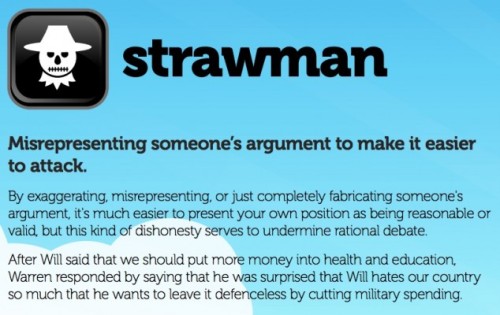
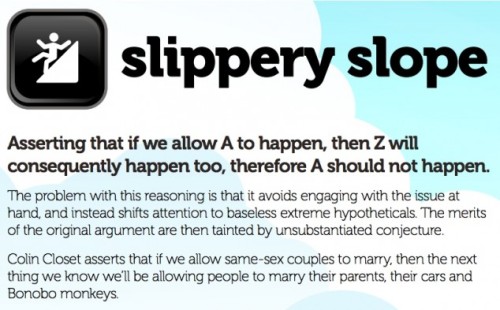
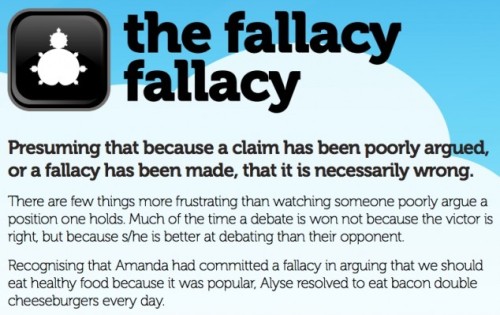
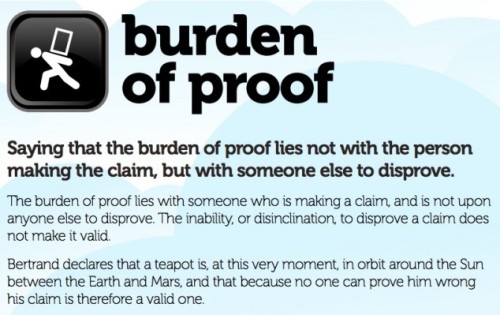
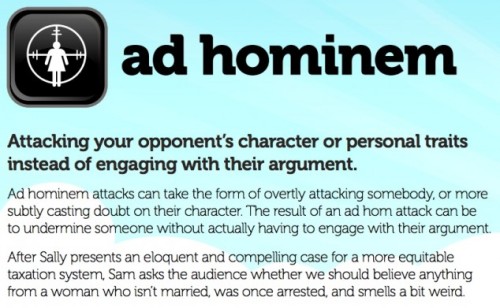
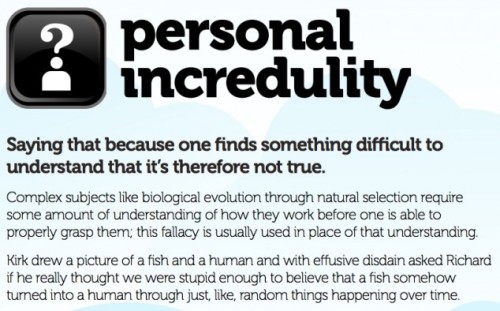
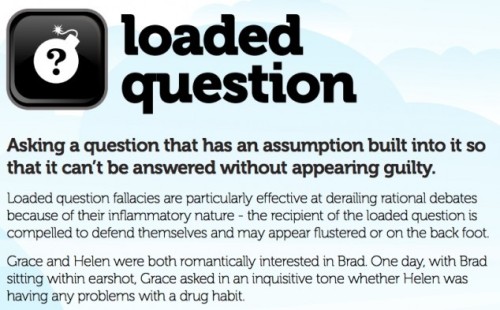
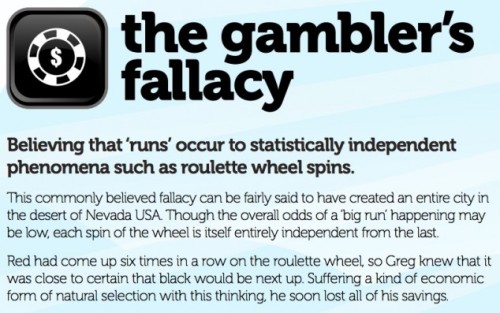

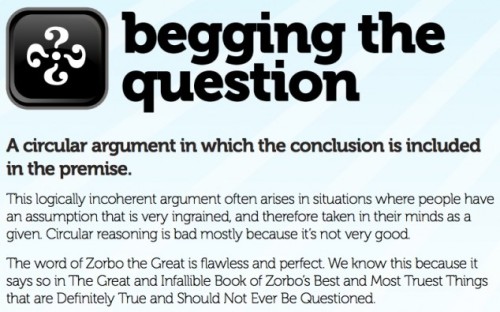
-
 axewell reblogged this · 4 months ago
axewell reblogged this · 4 months ago -
 vminiesvsoulmates reblogged this · 5 months ago
vminiesvsoulmates reblogged this · 5 months ago -
 vminiesvsoulmates liked this · 5 months ago
vminiesvsoulmates liked this · 5 months ago -
 heckcareoxytwit liked this · 11 months ago
heckcareoxytwit liked this · 11 months ago -
 fagiarism reblogged this · 1 year ago
fagiarism reblogged this · 1 year ago -
 carpe-cullen liked this · 1 year ago
carpe-cullen liked this · 1 year ago -
 toonass liked this · 1 year ago
toonass liked this · 1 year ago -
 magnicifent liked this · 1 year ago
magnicifent liked this · 1 year ago -
 mooslemilk reblogged this · 1 year ago
mooslemilk reblogged this · 1 year ago -
 martialwriter liked this · 1 year ago
martialwriter liked this · 1 year ago -
 writerwithoutsound liked this · 2 years ago
writerwithoutsound liked this · 2 years ago -
 axwritersxhaven reblogged this · 2 years ago
axwritersxhaven reblogged this · 2 years ago -
 polyplogligo liked this · 2 years ago
polyplogligo liked this · 2 years ago -
 corvusumbrielnecro liked this · 2 years ago
corvusumbrielnecro liked this · 2 years ago -
 catboykishibe liked this · 2 years ago
catboykishibe liked this · 2 years ago -
 afk-brb reblogged this · 3 years ago
afk-brb reblogged this · 3 years ago -
 mxboroshi reblogged this · 3 years ago
mxboroshi reblogged this · 3 years ago -
 technogeekmituna-writing-reblogs reblogged this · 3 years ago
technogeekmituna-writing-reblogs reblogged this · 3 years ago -
 craftychristylovesbooks liked this · 4 years ago
craftychristylovesbooks liked this · 4 years ago -
 royalrhythm reblogged this · 4 years ago
royalrhythm reblogged this · 4 years ago -
 writebruh liked this · 4 years ago
writebruh liked this · 4 years ago -
 jerrilindley liked this · 4 years ago
jerrilindley liked this · 4 years ago -
 useless-homosexual reblogged this · 4 years ago
useless-homosexual reblogged this · 4 years ago -
 useless-homosexual liked this · 4 years ago
useless-homosexual liked this · 4 years ago -
 my-reference-factory reblogged this · 5 years ago
my-reference-factory reblogged this · 5 years ago -
 bluhbluhwritingstuffbluh reblogged this · 5 years ago
bluhbluhwritingstuffbluh reblogged this · 5 years ago -
 preposterouslander reblogged this · 5 years ago
preposterouslander reblogged this · 5 years ago -
 ant1k0rper liked this · 5 years ago
ant1k0rper liked this · 5 years ago -
 referncesandstuff reblogged this · 6 years ago
referncesandstuff reblogged this · 6 years ago -
 mbarnes41494-blog liked this · 6 years ago
mbarnes41494-blog liked this · 6 years ago -
 kate-oclaire reblogged this · 6 years ago
kate-oclaire reblogged this · 6 years ago -
 the-kawaii-conqueror liked this · 6 years ago
the-kawaii-conqueror liked this · 6 years ago -
 charmingbluelove liked this · 6 years ago
charmingbluelove liked this · 6 years ago -
 littlemisscherryblossom-blog liked this · 6 years ago
littlemisscherryblossom-blog liked this · 6 years ago -
 writing-book-otp reblogged this · 6 years ago
writing-book-otp reblogged this · 6 years ago -
 notimeliketoday reblogged this · 7 years ago
notimeliketoday reblogged this · 7 years ago -
 notimeliketoday liked this · 7 years ago
notimeliketoday liked this · 7 years ago -
 writing-book-otp reblogged this · 7 years ago
writing-book-otp reblogged this · 7 years ago -
 loveaaaamblr liked this · 7 years ago
loveaaaamblr liked this · 7 years ago -
 lucid-dreaming-enigma liked this · 7 years ago
lucid-dreaming-enigma liked this · 7 years ago -
 oxymitch-archive liked this · 7 years ago
oxymitch-archive liked this · 7 years ago
